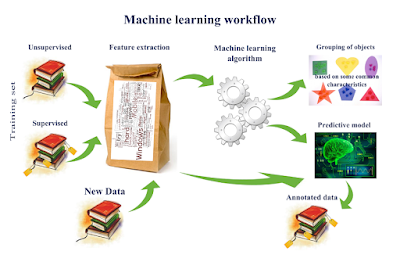In this new monthly Strategic Sourceror series, I’ll be reviewing all matters in New and Emerging
Tech. My goal in this series will be to share insightful considerations on emerging tech trends and the respective sourcing implications/implementation for your businesses and stakeholders. This series will be kept at monthly review to cover only the most relevant information in the industry - so please feel free to sign up for our monthly News Letter to keep your business in the know and innovating. Next up in this series ---
Machine Learning can cause alarm in its very name, echoing notions like:
“Machines Learning? Great…… they don’t need Health Benefits or 401K either…..”
With the new software’s that can classify financial expenditures and spend, like the in-built machine learning capabilities of SpendConsultant via Source One, these thoughts might cross the mind of the analyst or the spend management category teams.
Fundamentally, Machine Learning is not thinking. It is little more than intermediate levels of math and applying it to unstructured data with pattern recognition at mass computing power scales. The unstructured portion of this is what makes it this more involved than a macro and officially giving it recognition of Artificial Intelligence Sciences.
In the workflow above, the unstructured data isn’t exactly fully unstructured. It just isn’t in the clean format structure required of databases for predictive modeling.
In many instances, it isn’t that the computer is thinking. It has just been able to recognize more convoluted formats of data; for example, unstructured data as oppose to a CSV, Excel file, or in more cutting-edge example, a rock on the road for the driverless cars.
A better way to think of applications for Machine Learning is to liken it to supply chain of water: Think of structured data as a cup of water from a known source like Poland spring filtration. All the water molecules have been qualified to be in that cup and able to consume. While the unstructured data is water pre-filtration and the tech that powers this are filters structuring the data. The wake of the machine learning is an advent comparable to the impacts of desalinated seawater to the third world or the Californian coast. A breakthrough that is truly seeing a renaissance in many industries over - where we know there are things happening we just do not know what.
The ability to develop this Machine Learning Tech has been in such high demand that there are jokes of salary caps, as seen in football- with these tech experts having starting salaries able to reach $500K. Looking at the extreme end of this example, for your Tom Brady, in a court filing this year, Anthony Levandowski head of Googles self-driving car division had received $120MM in incentive pay (attributable to his patents he acquired prior) before joining Uber.
(while it is too late to be the next Serena Williams or Tom Brady, it’s not too late to go back to school [placing thought emoji here])…
And with this being said – the talent pool is shrinking due to the pent-up demand, bidding wars, and global HR strategies with the Tech, Automotive, and Consulting Industries all desperately vying for this talent.
The dramatic rise in the application of Machine Learning across industries is creating efficiencies that are potentially dating your department and Critical to Quality (CTQ )analyst job requirements. Roles as decision support is no longer defined as the ability to provide data to clients as Machine Learning Software is now able to lead the charge on vast swaths of inputs for data and with greater efficiencies. They are needing higher level skills with the ability to craft more insights, thus requiring a new professional.
The Hybrid Professional
To further compound and reflect the growth of Machine Learning trends, business schools are coming to terms, Companies now need to be more stringent about hiring candidates with explicit relative backgrounds. Simply relying on the department to provide on-the-job training isn’t sustainable.
Business schools are building degrees and requirements that promote unique hybrid professionals. Those able to demand control over these Business Intelligence (BI) tools and manage this data with cutting-edge sleek software like Qlik, Tableau, and programming with R. The Bureau of Labor Statistics forecasts the demand for the Business Analytics profession will increase by 22% up through the year 2022.
Is your business searching for the hybrid of tech and business professionals, if not, it will need to, to remain relevant due to capabilities of new SaaS solutions.



Post A Comment:
0 comments so far,add yours